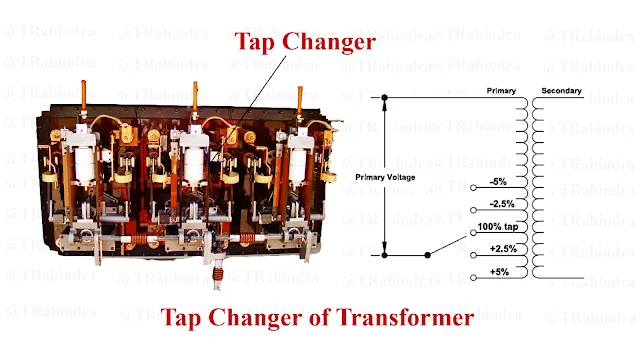Tap Changer
In distribution system, there is fluctuation(i.e increase or decrease) in supply voltage due to voltage drop or variation of the load. Hence, the supplied voltage must be maintained with in the permissible value for better consumer experience. This is done by changing the turn ratio of the transformer with the help of mechanism called tap changer.
Tap changer is the mechanism used in transformer to maintain supply voltage by alternating the number of turns in the winding (i.e changing the turn ratio of the transformer). It is provided either in primary or in secondary winding of the transformer. It is an important part of the transformer.
Function of Tap Changer in Transformer
The main function of tap changer in transformer is to regulate the supplied voltage for better consumer experience. Most of the loads like bulbs, fans, refrigerator, mixers,motors, electric iron or other appliances that is used in our daily life are designed to work on constant voltage level. Hence, it is necessary to maintain the supplied voltage with in permissible value to supply constant voltage to loads for efficient operation, long lifespan and better consumer experience.
Working or Operation of the Tap Changer
The working principle of the tap changer is based on changing turns ratio i.e Change in the number of turns either in primary and secondary winding results change in supplied voltage of the load.
Consider V1, N1 and V2, N2 be the primary and secondary voltage and number of turns respectively. We have from turns ratio (N1/N2)=(V1/V2) also,V2=(V1×N2)/N1. Hence, supplied voltage can be maintained with in the permissible value by changing the turns ratio.
It usually maintain the supplied voltage of the load from ±2.5% to ±5%.
Location of the Tap Changer
It is usually located in high voltage side of the transformer because high voltage winding is placed over the low voltage winding which is easily accessible also there flows less current in high voltage winding as compered to low voltage winding. Due to low flowing current in high voltage winding, chance of changer over spark is reduced in on-load tap changer.
Types of Tap Changer
It is classified into two types that is used in transformer which are listed below.
- No-load Tap Changer (NLTC)
- On-load Tap Changer (OLTC)
Conclusion
Hope, you have clearly understand about the Tap changer of the transformer, its function, working, location and types. Make sure to leave your opinion and suggestion about this post in the comment section below.
